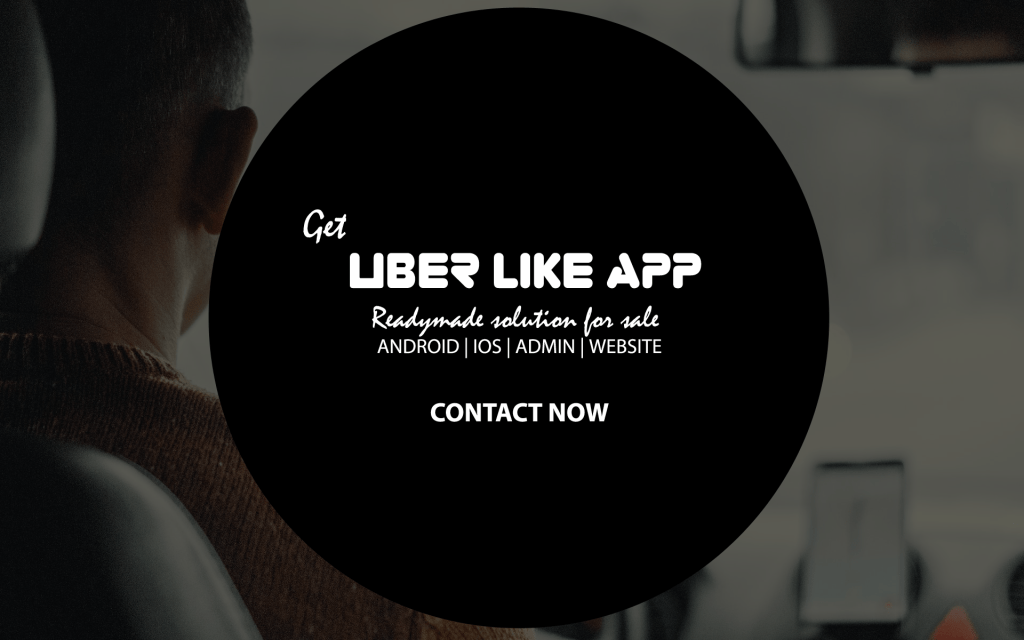Introduction:
We should not recommend any specific ride-sharing app development company as the “best” in the USA. However, there are several well-known and reputable ride sharing app development companies in the USA, each with their own unique strengths and expertise.
Here are a few examples of top ride-sharing app development companies in the USA:
- Appoks Infolabs: A top-rated app development company with a proven track record of developing high-quality ride-sharing apps.
- Fueled: A full-service app development agency that has worked with several leading ride-sharing companies to develop their apps.
- Konstant Infosolutions: A global technology company with extensive experience in ride-sharing app development and other on-demand services.
- Zco Corporation: An award-winning mobile app development company with expertise in ride-sharing and other transportation-related apps.
- Apptunix: A leading app development company that has worked with several ride sharing startups to develop their apps and bring them to market.
When looking for a ride sharing app development company, it’s important to consider their experience, expertise, pricing, and client reviews. Be sure to research multiple companies and ask for their portfolio and references before making a decision.
What is ride sharing app development?
Ride sharing app development refers to the process of creating software applications that allow users to connect with drivers who are willing to provide transportation services. Ride-sharing apps are typically used by people who need a ride to a specific destination, but who do not want to use traditional taxi services.
The development process involves designing and building a user-friendly interface, as well as creating algorithms and systems that can match riders with available drivers. The app typically includes features such as real-time tracking, payment processing, and user ratings and reviews.
Ride sharing app development can be a complex and challenging process, as it requires a deep understanding of mobile app development, user experience design, and transportation logistics. Some popular ride-sharing apps include Uber, Lyft, and Grab.
How to make ride share app development full cost estimate?
Ride sharing apps have revolutionized the way people get around, providing a convenient and affordable alternative to traditional taxis. However, developing a ride-sharing app is no easy feat, and it requires a significant investment of time, money, and resources.
If you’re considering developing a ride-sharing app, one of the most important things you’ll need to do is estimate the full cost of development. In this article, we’ll provide a step-by-step guide to help you make a realistic cost estimate for your ride-sharing app.
- Define Your Requirements
The first step in estimating the cost of developing a ride-sharing app is to define your requirements. This means identifying the features and functionality you want your app to have, as well as any other requirements, such as the platforms you want to support (iOS, Android, etc.), the level of user security you require, and any other unique needs specific to your app.
- 2. Research Development Costs
Once you have defined your requirements, you can begin to research the development costs for your app. This will involve identifying the various elements of your app’s development, such as front-end design, back-end development, database development, and testing.
You should also research the hourly rates of developers in your area or the region where you plan to outsource your development work. This will give you a good idea of the hourly rate you can expect to pay for each type of development work.
- 3 Determine Your Timeline
The timeline for your app’s development will also play a significant role in determining the cost. If you need your app developed quickly, you may need to pay a premium for faster development. On the other hand, if you have a more extended timeline, you may be able to spread out the development work and reduce costs.
- 4 Account for Maintenance and Support Costs
Once your app is developed and launched, you’ll need to account for ongoing maintenance and support costs. This will involve bug fixes, updates, and other support-related activities. You should plan for these costs from the outset to ensure that you don’t run out of money after launch.
- 5 Factor in Marketing Costs
Marketing is an essential part of launching any app, and ride-sharing apps are no exception. You’ll need to factor in the costs of advertising and promotion, as well as any other marketing activities you plan to undertake.
- 6 Estimate Your Total Cost
Once you have all of the relevant information, you can begin to estimate the total cost of developing your ride-sharing app. This will involve adding up the costs of development, maintenance, support, and marketing. You may also want to add a contingency buffer to account for unexpected costs or overruns.
It’s essential to remember that ride-sharing app development is a complex and challenging process that requires significant investment. However, by taking the time to estimate your costs accurately, you can ensure that you have a realistic budget and a solid foundation for your app’s development.
How to Build a Ride-Sharing App from Scratch?
Building a ride-sharing app from scratch requires a deep understanding of mobile app development, transportation logistics, and user experience design. If you’re interested in creating your own ride-sharing app, here are the basic steps you’ll need to follow:
- 0 Define Your Business Model
The first step in building a ride-sharing app is to define your business model. You’ll need to decide on the type of ride-sharing service you want to offer (e.g., on-demand, scheduled), the types of vehicles you want to use (e.g., cars, bikes), and the pricing structure you plan to use (e.g., flat rate, dynamic pricing).
- 1 Research Your Market
Before you start developing your app, you’ll need to research your market to determine demand for your service and identify any potential competitors. This will involve conducting market research, analyzing user behavior, and identifying any regulatory or legal requirements you’ll need to meet.
- 2 Design Your App
Once you have a solid understanding of your business model and market, you can begin designing your app. This will involve creating wireframes, user flows, and other design elements that will form the foundation of your app.
- 3 Develop Your App
With your design in place, you can begin developing your app. This will involve building the front-end (UI/UX) and back-end (server-side) components of your app, as well as any necessary integrations with third-party services (e.g., payment processing, mapping).
- 4 Test Your App
Once your app is developed, you’ll need to test it thoroughly to ensure that it meets your quality standards and functions as intended. This will involve conducting manual and automated testing, identifying and fixing any bugs, and making any necessary adjustments to improve performance and functionality.
- 5 Launch Your App
Once your app is fully tested and ready to go, you can launch it to the public. This will involve creating a marketing and promotion strategy, submitting your app to app stores (e.g., Apple App Store, Google Play), and tracking user feedback and performance metrics to identify areas for improvement.
Building a ride-sharing app from scratch is a complex and challenging process that requires a high level of technical expertise and a deep understanding of the transportation industry. However, by following these basic steps and working with experienced developers and designers, you can create a successful ride-sharing app that meets the needs of your users and provides value to your business.
What is the best Ride sharing app development company?
What are the basic requirements for creating a ride-sharing app?
Creating a ride-sharing app requires careful planning and execution to ensure a smooth and reliable user experience. Here are some of the basic requirements you’ll need to consider when creating a ride-sharing app:
- User Interface Design: The user interface (UI) is the first thing users will see when using your app, so it’s important to design it with usability and convenience in mind. The UI should be intuitive and easy to navigate, with clear and concise instructions for using the app.
- Location-Based Services: A ride-sharing app requires location-based services to identify the user’s location and match them with nearby drivers. You’ll need to integrate a mapping API, such as Google Maps or Mapbox, to provide accurate and real-time location data.
- Payment Gateway Integration: You’ll need to integrate a payment gateway, such as Stripe or Braintree, to handle payment transactions securely and efficiently. This will involve setting up payment methods, such as credit/debit cards and digital wallets, and implementing secure payment processing.
- Driver Management System: Your app will need a driver management system to manage driver accounts, including registration, verification, and scheduling. This system will also handle ride assignments and dispatch, and track driver ratings and feedback.
- Ride Tracking: You’ll need to integrate ride tracking features to allow users to track their ride in real-time, including the driver’s location and estimated time of arrival. This will require integrating GPS and mapping technologies to provide accurate and real-time ride tracking.
- Notifications: You’ll need to provide real-time notifications to both riders and drivers to keep them informed about the ride status, payment transactions, and other important updates. This will involve integrating push notifications and in-app messaging features.
- Security: Security is critical for any ride-sharing app, and you’ll need to implement robust security measures to protect user data, prevent fraud, and ensure safe and reliable ride-sharing experiences. This will involve implementing encryption and other security protocols to protect user data and transactions.
These are some of the basic requirements for creating a ride-sharing app. However, there may be additional requirements depending on the specific features and functionality of your app. Working with experienced developers and designers can help ensure that your app meets all necessary requirements and provides a seamless and reliable user experienc
How do ride-sharing apps work?
Ride-sharing apps work by connecting riders with nearby drivers who are willing to provide rides for a fee. Here’s a breakdown of how ride-sharing apps typically work:
- Rider requests a ride: A rider opens the ride-sharing app and requests a ride by entering their pickup location and destination.
- Driver accepts the ride: The app sends the ride request to nearby drivers, and one of them accepts the ride.
- Driver picks up the rider: The driver navigates to the pickup location and picks up the rider.
- Ride begins: The driver begins the ride and takes the rider to their destination.
- Payment: Once the ride is completed, the rider pays for the ride through the app. The payment is automatically deducted from the rider’s account or credit card, and the driver receives their payment.
- Rating: After the ride is complete, both the rider and driver can rate each other and provide feedback about the ride.
Ride-sharing apps typically use GPS tracking and location-based services to match riders with nearby drivers. They also use complex algorithms to calculate ride prices based on factors such as distance, time, and demand.
To ensure safety and security, ride-sharing apps usually require drivers to pass background checks and maintain high ratings from riders. They also provide in-app communication tools for riders and drivers to contact each other and report any issues.
Please read our other articles:
Conclusion:
In conclusion, ride sharing apps development have transformed the way people travel, providing a convenient and affordable alternative to traditional transportation options. These apps use complex algorithms and GPS tracking to match riders with nearby drivers, and provide seamless payment processing and rating systems to ensure a reliable and secure experience for all users.
To create a successful ride sharing app development, you’ll need to carefully plan and execute all aspects of the app, including user interface design, location-based services, payment gateway integration, driver management systems, ride tracking, notifications, and security measures. Working with experienced developers and designers can help ensure that your app meets all necessary requirements and provides a seamless and reliable user experience.
Overall, ride sharing app development have revolutionized the transportation industry, and are likely to continue to grow in popularity as people seek out convenient and affordable ways to travel.






 Mr. Abhinay is Managing Director at Appok Infolabs.
Having12+ years of experiance in AI. | VR. | ML. and Expertise in Cloud computing | Digital marketing | Search engine optimisation.
Mr. Abhinay is Managing Director at Appok Infolabs.
Having12+ years of experiance in AI. | VR. | ML. and Expertise in Cloud computing | Digital marketing | Search engine optimisation.